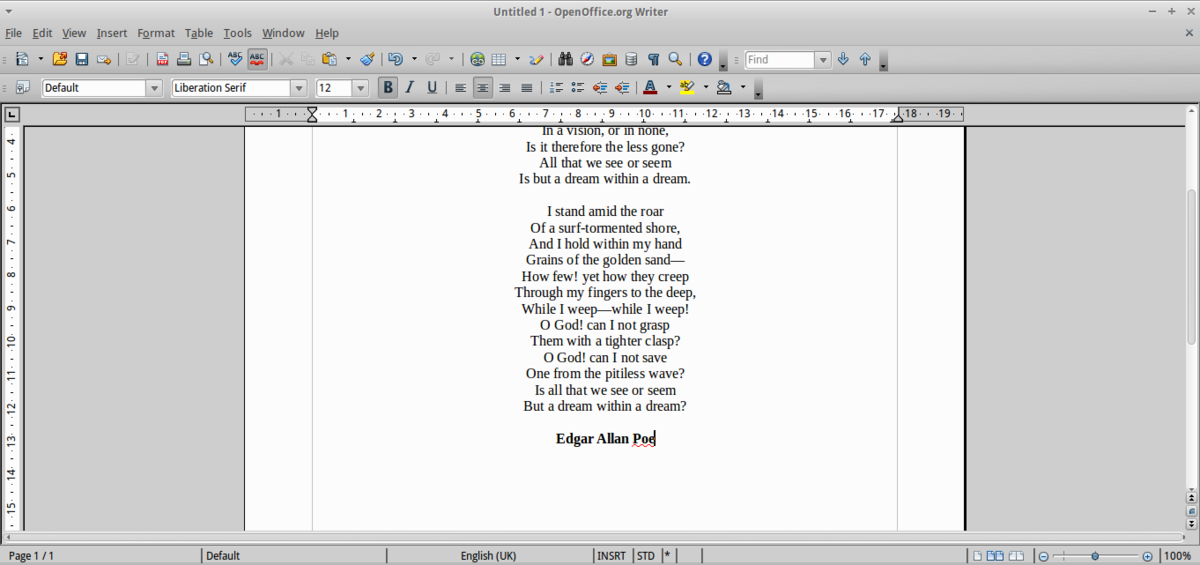- Apache Openoffice For Mac Os X
- Mysql For Mac
- Apache For Mac Os X Download
- Apache Mac Os X Sierra
- Apache
- Apache Mac Os X Mojave
OS X is preinstalled with Apache and Python. Apache executable (apachectl) is at /usr/sbin/apachectl and Python is at /usr/bin/python. But the configurations for Apache are at /etc/apache2, specifically in the file httpd.conf. Jul 16, 2017 Mac runs on base Unix foundation so mainly you could install almost all Linux/Unix software on Mac very easily. Mac OS X comes by default with Apache Web Server and PHP. In this tutorial we will go over steps on how to enable those on Mac. Let's get started: Enable Apache Web Server Step-1. Open terminal App and run below command. Sep 03, 2020 Mac users will also benefit from this program since it is now available for Mac OS X via Apache OpenOffice.org Mac. Spreadsheet tools: Apache OpenOffice.org Mac has a spreadsheet tool that functions as if you are working on Microsoft Excel. With OpenOffice Calc, you can create folders and manage them.
Installing Tomcat 9 on Mac OS X El Capitan is actually quite easy.
The Mac OS X installation process is fairly painless and straight forward, but there are a few rough spots along the way. Follow these step by step instructions to get Tomcat up and running on your Mac OS X machine in no time.
Configure Environment Variables

Prerequisite: Java
Download and install the latest Java 8u92 form this link.
The JDK installer package come in an dmg and installs easily on the Mac; and after opening the Terminal app again,
java -version
Now shows something like this:
java version '1.8.0_66'
Java(TM) SE Runtime Environment (build 1.8.0_66-b17)
Java HotSpot(TM) 64-Bit Server VM (build 25.66-b17, mixed mode)
Whatever you do, when opening Terminal and running java -version, you should see something like this, with a version of at least 1.7.x I.e. Tomcat 9.x requires Java 7 or later.
JAVA_HOME is an important environment variable, not just for Tomcat, and it's important to get it right.
To set the JAVA_HOME variable, open a new Terminal window and use the following command to open the system profile for editing. (You can substitute your favorite text editor. We like Vim.):
Apache Openoffice For Mac Os X
vi ~/.profile
Once you've opened the profile, add the following lines to set the JAVA_HOME and CATALINA_HOME variables:
export JAVA_HOME=/Library/Java/Home
export CATALINA_HOME=/Path/To/Tomcat/Home
Installing Tomcat
1. Download Tomcat from the official website (tomcat.apache.org), select Tar.gz format under the Core section
2. Extract the Tomcat to directory: /Library, in order to facilitate the use, rename the folder to 'Tomcat'

Prerequisite: Java
Download and install the latest Java 8u92 form this link.
The JDK installer package come in an dmg and installs easily on the Mac; and after opening the Terminal app again,
java -version
Now shows something like this:
java version '1.8.0_66'
Java(TM) SE Runtime Environment (build 1.8.0_66-b17)
Java HotSpot(TM) 64-Bit Server VM (build 25.66-b17, mixed mode)
Whatever you do, when opening Terminal and running java -version, you should see something like this, with a version of at least 1.7.x I.e. Tomcat 9.x requires Java 7 or later.
JAVA_HOME is an important environment variable, not just for Tomcat, and it's important to get it right.
To set the JAVA_HOME variable, open a new Terminal window and use the following command to open the system profile for editing. (You can substitute your favorite text editor. We like Vim.):
Apache Openoffice For Mac Os X
vi ~/.profile
Once you've opened the profile, add the following lines to set the JAVA_HOME and CATALINA_HOME variables:
export JAVA_HOME=/Library/Java/Home
export CATALINA_HOME=/Path/To/Tomcat/Home
Installing Tomcat
1. Download Tomcat from the official website (tomcat.apache.org), select Tar.gz format under the Core section
2. Extract the Tomcat to directory: /Library, in order to facilitate the use, rename the folder to 'Tomcat'
3. Open Terminal, modify folder permissions
sudo chmod 755 /Library/Tomcat/bin/*.sh
Mysql For Mac
4. Press the Enter key, then you will be prompted for a password, enter the administrator password. Then continue with the following command to open the tomcat service
Apache For Mac Os X Download
sudo sh startup.sh
5. Open the browser and enter http://localhost:8080/, press Enter.
Apache Mac Os X Sierra
If you see the Apache Tomcat, this means Tomcat has successfully run
Apache
That is it! You should now be able to access Apache Tomcat's welcome page on http://localhost:8080. If you wish to make stopping Tomcat 9, use this command:
Apache Mac Os X Mojave
sudo sh /Library/Tomcat/bin/shutdown.sh
